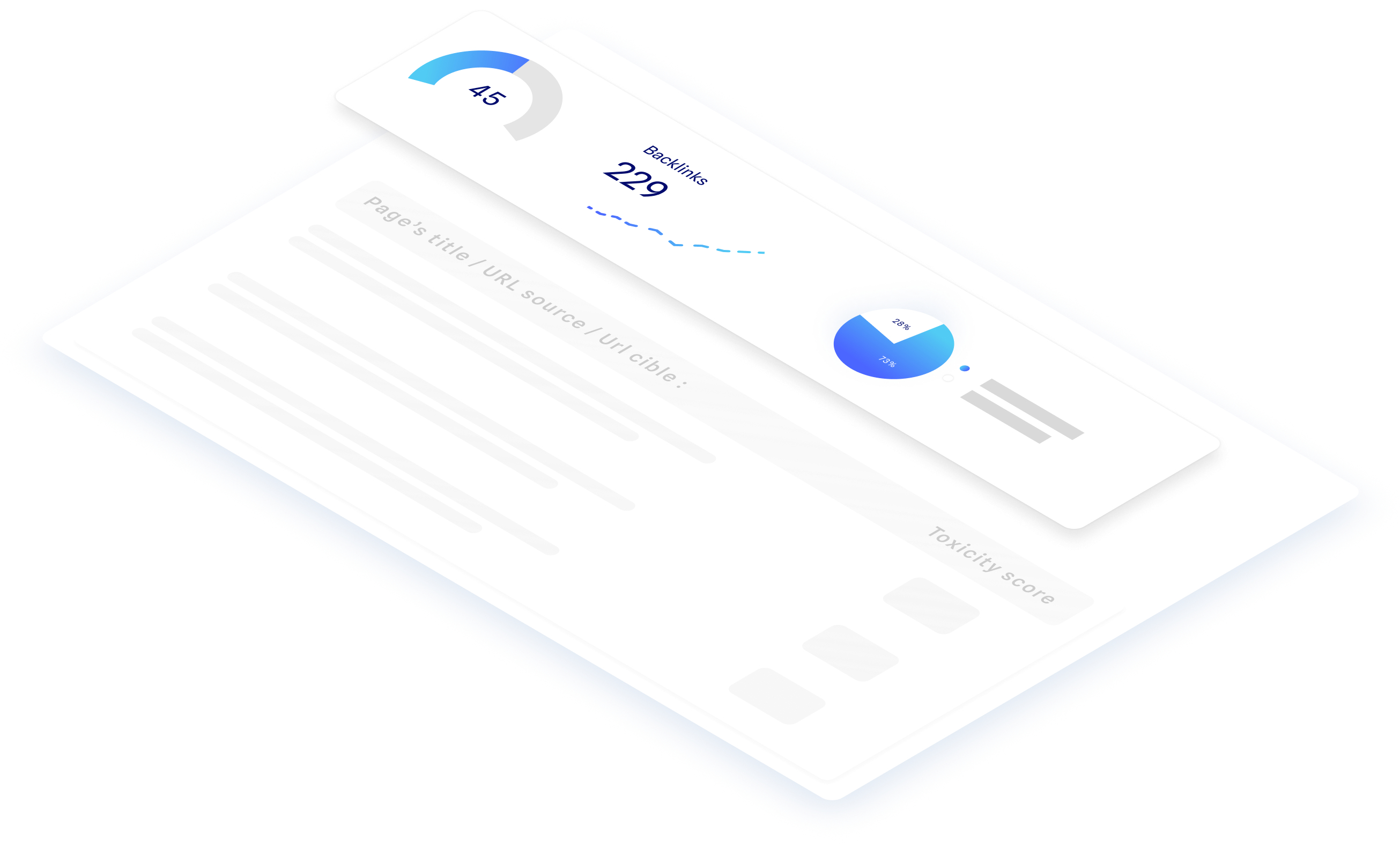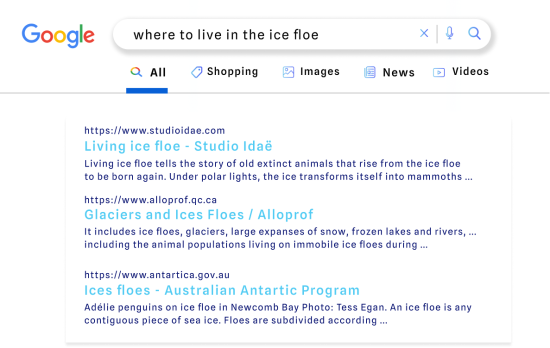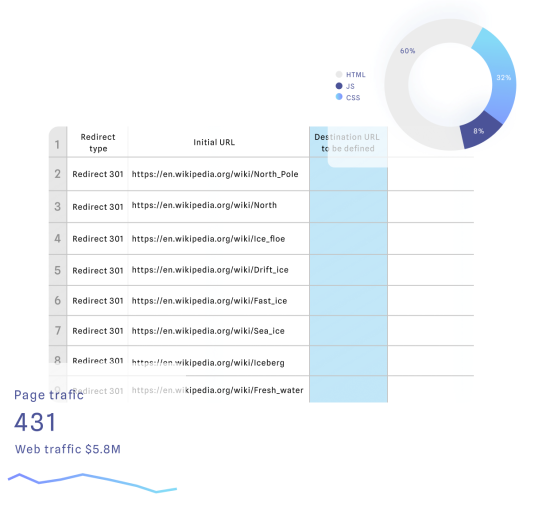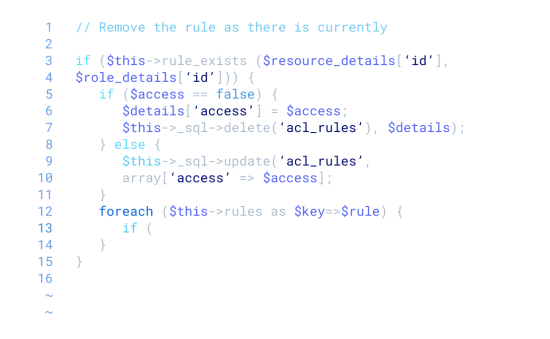
Off-Site Audit: Analyse the Popularity of a Website
Off-site audits focus on the external SEO tools you can use to analyse your website. These levers cover popularity, relevance, trust, and authority.

What Is an Off-Site Audit?
SEO auditing seeks to analyse a website’s performance on the search engines: rankings achieved for specific keywords, traffic volumes being generated, etc. This analysis encompasses three basic elements: technique, content, and popularity (or reputation). The latter is what we’re looking into here. Typically, while an off-site audit is carried out as part of a broader SEO audit, it has more to do with the organic search engine optimisation levers that are external to the website but still connected to it. Two main areas deserve thorough examination: backlinks (or inbound links) and the website’s e-reputation (how key players and users perceive it). These allow search engines to give the website a trust score. Once the off-site audit is complete, you get a report offering recommendations you can implement to improve your SEO performance.
What Makes Online Reputation So Important?
Search engine algorithms are in constant evolution, encouraging experts to keep adapting and refining their search engine optimisation techniques. With that said, several criteria are not subject to change despite algorithm updates: Popularity, relevance, trust, and authority continue to play a major part in how engines perceive websites. These factors also affect how pages are ranked in the SERP. It means that the more confidence a website inspires, the more it makes sense to showcase it in the results. According to Moz, off-site SEO factors are responsible for over 50% of a page’s ranking results! Google confirmed the importance of these criteria through its content assessment system, otherwise known as E.A.T. – Expertise, Authority, and Trust. This system implies that higher-quality pages are more reliable, giving them better chances of making it to the top of the SERP.

Why Launch an Off-Site SEO Audit?

-
Improved Authority
It improves the website’s PageRank (one of the factors Google uses to assess a page’s authority) and its overall authority.
-
Improved Traffic
Better rankings mean greater SEO visibility, which generates more traffic, including “referral traffic” from third-party websites.
-
New Audiences
When a website’s reputation improves, it helps it reach new audiences (through social media, social influence marketing, content marketing, etc.).
-
Higher Competitiveness
A better understanding of the competitors that share your market and their SEO strategies provides an undeniable competitive advantage.
-
Higher Conversion
This is the eventual goal: Improving the website’s conversion rate to take better advantage of the traffic it generates.
-
Good SEO Practices
You can avoid potential penalties by mastering search engine guidelines and adopting good SEO practices, especially on Google.
When Should You Perform an Off-Site Search Engine Optimisation Audit?
In most cases, an off-site audit (together with an overall SEO audit) is prescribed when a website is undergoing a major change. It could be a redesign or a migration, implementing an SEO strategy (or reviewing an existing one), significant changes to the architecture, uncovering a performance anomaly (sudden loss of traffic or rankings, which may be the result of a penalty), etc. A specific off-site audit can also be carried out independently from other SEO-related analyses. This allows you to visualise link profiles or assess the website’s reputation at a given point in time. All that doesn’t change the objective, which is to detect potential issues or elements that could impede search engine optimisation and implement solutions to correct these issues and boost the site’s SEO performance.

-
66%
of web pages
receive no backlinks. -
65%
of marketers
consider link-building to be the most difficult-to-implement SEO lever. -
44%
of the best-positioned pages
on Google contain reciprocal links.
How to Carry Out an Off-Site Audit?
Step One of Your Off-Site Audit: Launching a Crawl of the Website to Be Audited
Every SEO audit, whatever the angle from which it is viewed, begins with a crawl of the website to be analysed. In the case of an off-site audit, this will provide valuable information regarding the backlinks. Specific tools – such as Screaming Frog – are designed to imitate how the crawlers (bots) behave and offer a complete overview of a website’s SEO performance. Others focus on more in-depth data, covering inbound or outbound links, competitors’ backlinks, or link-building opportunities: That’s what Ahrefs and SEMrush are for. It’s a complex task, and calling upon a search engine optimisation expert remains essential if you wish to see the audit through, interpret the results, and get a comprehensive list of recommendations.

Step Two: Analysing Backlinks
Backlinks are external links published on third-party websites that point to the pages of the website to be audited. They form one of the most significant SEO signals you could analyse. An off-site audit helps you assess the quality of the links that send users to your pages. What elements should you check first?

-
Link Volume
How many backlinks does your website have – and how many different domains do they emanate from? The variety of these domains is a foremost criterion for your reputation. Having 5,000 links from only 10 domains doesn’t constitute a strong profile (even if you won’t necessarily be penalised for it). If your competitors enjoy a wider variety of links than you do, it could impede your SEO.
-
Link Quality
The notion of « quality » covers three things: The authority of the referring domain (which also determines the quantity of “SEO juice”), the thematic relevance of the page where the link is published, and the nature of the backlink itself (based on whether it was acquired organically or artificially). In that regard, “toxic” links are the most dangerous, as they can cause your website to receive a Google Penguin penalty.
-
Link Attributes
By default, a hypertext link is a dofollow link. It transfers “link juice” from the page where it originates to the page it points to. This attribute may be changed to nofollow. It doesn’t cause any harm but it doesn’t allow rankings to circulate. This is problematic if the backlink is published on a high-authority website.
-
Link Health
An off-site audit is a way to detect broken links – a common issue that can be especially damaging when the backlinks in question are supposed to bring Internet users (and bots) to your pages. The analysis will allow you to draw up a list of dead links and set them back up or – worst-case scenario – delete them altogether to improve the user experience and crawl.
-
Link Anchors
Anchors are texts on which hypertext links are created. It may seem trivial, and yet an anchor is a double-edged sword. You need to find the ideal balance between optimised text (using keywords) and natural, organic phrases (using a brand name, a URL, or any other phrase). Search engines should be able to assess the relevance of the links from their anchors. But watch out: If they’re too well optimised, it might be interpreted as a spamming attempt.
Step Three:
Assessing the Website’s Reputation
As a value, reputation is difficult to quantify. When assessing it as part of an off-site audit, specialists focus on the levers that affect how users and search engines perceive the website. What are these elements?
-
Brand Image
It varies based on two factors. 1) the number of web publications that mention the brand, and 2) the volume of “brand queries” formulated by Internet users (when they are specifically looking for the name of the company, the brand, or its products or services). A Google Trends search will also give you an overview of these trends.
-
Social Media
Social presence doesn’t affect SEO directly. But user engagement has two beneficial effects. It improves visibility and reputation while encouraging users to access the website through social media posts (referral traffic) and look up the brand. Social media is also a lever for customer service, which is great for e-reputation.
-
Company E-Reputation
What makes the online reputation of a company or brand is all the content published about the organisation on the web. Bad buzz hurts your reputation, nudging the users away from the company or brand – and creating a red flag for search engines. Reviews posted online also play a major part in the management of a website’s e-reputation.
-
Local SEO
Local search engine optimisation has a significant off-site dimension. It takes the form of a Google Business Profile (formerly known as Google My Business), which comes into play in a company’s visibility at the local level. NAP (Name, Address, and Phone number) citations published on directories and customer rating platforms also fall under this category. Keep in mind that 46% of Google searches are looking for local information (HubSpot).
What Should You Do Following an Off-Site Audit?
After an Off-Site Audit: Concrete Actions to Take
Once the off-site SEO audit is complete, the report edited, and the recommendations made, it’s time to take action and optimise your website! These actions fall under the scope of the two fields of analysis mentioned above: Backlinks and Reputation. There is a connection between these levers, since having many quality backlinks tends to consolidate a website’s reputation, while its growing popularity encourages webmasters to publish more inbound links on their pages. This is likely to happen whether you requested these links or not. With that said, these steps should be part of a more comprehensive SEO strategy entrusted to the good care of a search engine optimisation expert.

Implementing a Link-Building Strategy
The information collected throughout the off-site audit will give you all the elements necessary to devise your link-building strategy. It’s all about creating the ideal conditions to receive quality backlinks from a variety of high-authority referring domains. There are several ways to approach this.
-
Selecting Specific Targets
When choosing a website on which to publish a backlink, you should take three factors into account: Authority, quality, and thematic relevance.
-
Relying on Link-Baiting
Link-baiting is a practice that consists in creating quality content to encourage users to generate links to your pages naturally.
-
Applying the Principles of Reciprocity
“Reciprocal links” are created between two pages with a similar theme: “Link to me, and I’ll link to you.” While it may not be as effective as it used to be, this technique remains viable.
-
Banking on Sponsored Articles
One way of getting quality – dofollow – links is by purchasing sponsored articles. These should meet the editorial standards of the site that publishes them.
-
Asking for the Missing Links
If your company or brand is mentioned in someone else’s content with no associated link, then you can ask the webmaster to correct this mistake by publishing a backlink.
-
Monetising Broken Inbound Links
If you find broken links – links that no longer work – you can offer the editors “fresh” links that point to richer content.
Getting Rid of Unwanted Backlinks
Another crucial action when taking care of your backlinks is to remove any links that search engines may consider undesirable. To identify these links, you can start from the list drawn up during your off-site audit. It contains every toxic backlink that could potentially harm your SEO. There are two ways to go about it: You could contact the webmasters of the websites in question and ask them to remove the problematic links, or you could disavow the most toxic backlinks by turning directly to the search engine. You can call their attention to the offending sites (typically those relying on Black Hat SEO or Negative SEO techniques). And don’t hesitate to whitelist any good backlinks that may have been eliminated inadvertently!

Working on Your Reputation
There are various ways to work on your website’s reputation. Here are the six methods we believe have the most beneficial indirect impact on your pages’ search engine optimisation.

-
Step 1
Being Active on Social Media
Choose the most relevant social media platforms based on your activity and targets and publish content regularly. And don’t forget to interact with your audiences!
-
Step 2
Building Your Brand Authority
Brand building can be done through a range of actions, from expert content publication to organising events (webinars, trade shows, conferences).
-
Step 3
Rolling Out a PR Strategy
Press relations can do a lot to boost your reputation, which is why having a proper media presence is of the essence.
-
Step 4
Publishing Quality Content
Content marketing also works for off-site SEO. That’s because publishing high-quality – potentially viral – content on third-party websites has a direct and positive impact on your reputation.
-
Step 5
Leveraging Influence Marketing
Calling upon influencers can help you develop your online presence, strengthen your brand image, and reach new audiences.
-
Step 6
Leaning on Customer Reviews
Positive customer reviews and ratings send out “brand signals” that search engines will pick up on. These signals indicate that your customers trust your company
Working on Your Local SEO Rankings
Lastly, as we’ve already pointed out, you can boost your off-site SEO performance through actions that focus on local search engine optimisation. There are two main levers to activate.
-
Your Google Business Profile
This profile is extremely important for any company wishing to show up in Google’s famed “local pack” and on Google Maps. Create your profile – if you haven’t already done so – or claim it – if it already exists – and take the time to fill out all the relevant fields. This will allow you to receive customer reviews, indicate your opening times, or publish a link to your website.
-
Your Local Visibility
A company’s local visibility also depends on its active web presence, particularly on location-based platforms such as local directories, the local Chamber of Commerce and Industry website, your local city hall website, review platforms (such as TripAdvisor), etc. You could also try websites run by associations or individuals, which may grant you a certain level of visibility, thus helping you develop your reputation.
Our Commitment
-
Expertise
Since 2010, we have worked with over 2000 clients across 90 countries.
-
Passion
We are a team of passionate, industry-focused individuals who are committed to your success.
-
Performance
We’re committed to implementing a data-driven strategy, making a real impact on your bottom line by providing avenues for growth.
Any questions?
An off-site audit refers to the part of an SEO audit that focuses on search engine optimisation levers external to the website, yet still relevant to it. When performing this type of analysis, the emphasis is mainly on backlinks (inbound links) and on the website’s reputation (how it is perceived on the web). For a comprehensive SEO audit, the off-site aspect of the analysis is complemented with technical and semantic assessments.
To assess how interesting a website is and determine how it should be ranked in the SERP, search engines look closely at 4 criteria: Popularity, relevance, confidence, and authority. These factors – which amount to over 50% of the elements considered for ranking purposes – are influenced by what happens outside the website itself. That’s why carrying out an off-site audit is crucial if you wish to detect any issues that could impact your backlinks and reputation.
Step one: Start a crawl of the entire website to extract backlink-related information. Step two: Analyse these inbound links based on relevant indicators such as volume, referring domain variety, quality, link health, and anchor texts. Step three: Assess your website’s reputation through the lens of your brand image, social media presence, e-reputation, and local SEO.








